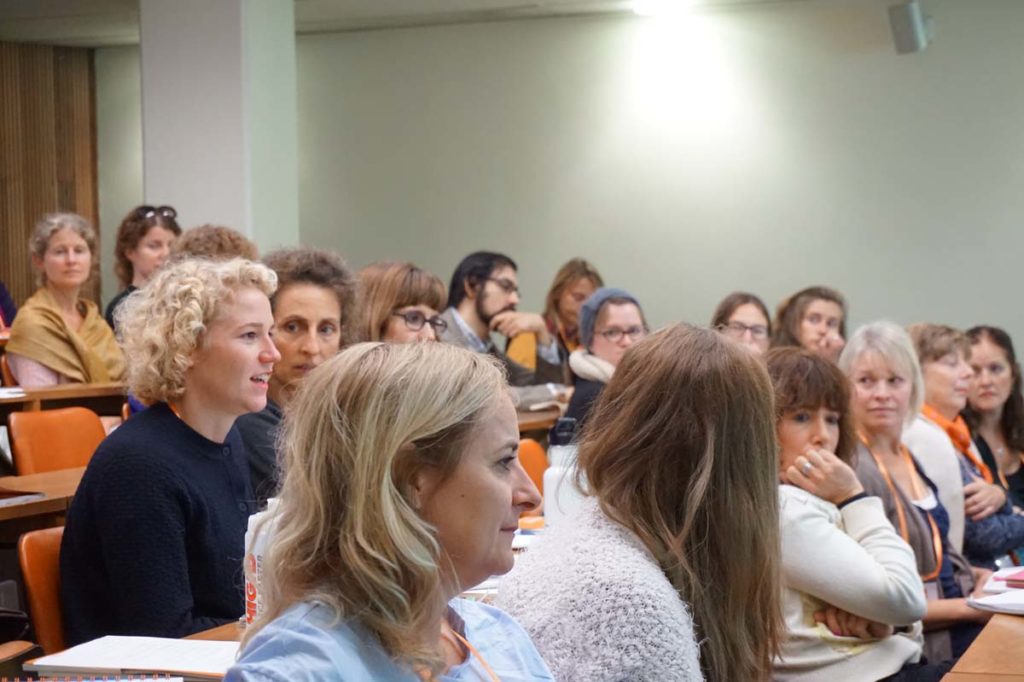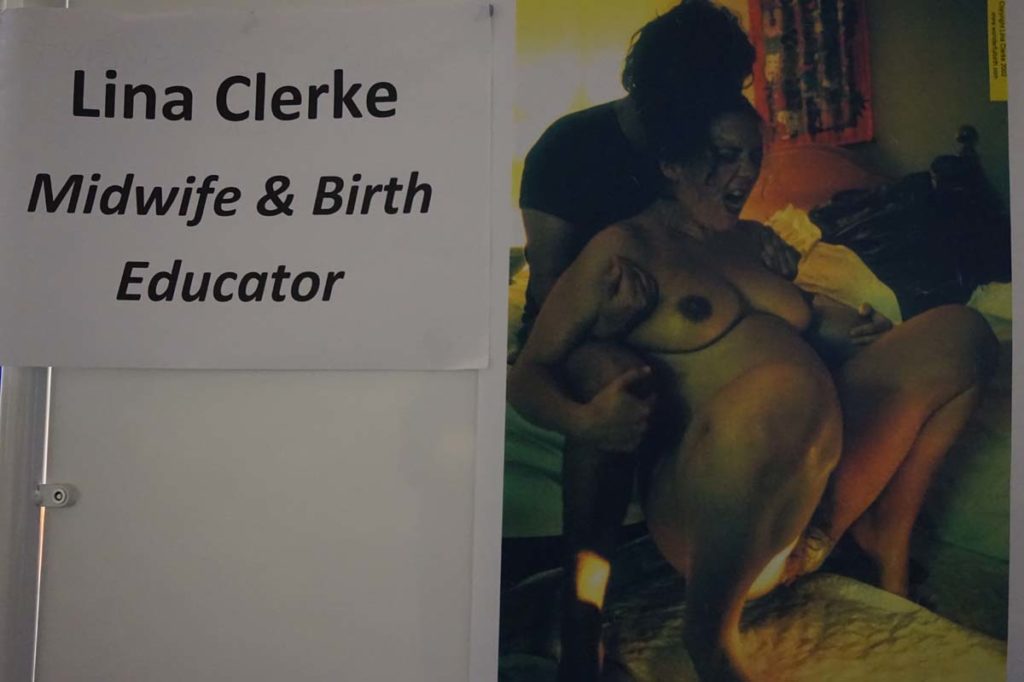MATERNAL IMAGES AND MATERNAL REPRESENTATIONS BEFORE, DURING AND AFTER BIRTH (CAMBRIDGE, 19 SEPTEMBER 2015)
Abundant research on ‘maternal representations’, how women imagine and represent their pregnant bodies and their babies, has shown links with the quality of the mother-baby relationship in the first year after birth and even later on. Few studies, however, offer practical resources to help pregnant women and new mothers develop personal positive images of themselves with their babies.
This day conference brought together a cross-section of researchers, medical and lay practitioners, artists and mothers for exploring and reflecting on the power of maternal imaginings on the experience of transition to motherhood in an increasingly visual and media-dominated world.
Conference Speakers:
Ryc Aquino
Rebecca Feasey
Chris Knight
Mira Lal
Heather Mason
Christina Moutsou
Rosalind Mayo
Antonella Sansone
Satya Shepherd
Diane Speier
Hermione Wiltshire
Artists:
Lina Clerke (photosets for birth education)
Renée Spierdijk (Cambridge artist)
Review by Jodi Garrod: Midwife, Doula, KG Hypnobirthing teacher and Birthlight enthusiast
The rare fusion of different disciplines: anthropology, physiology alternative medicine, psychology, art, popular culture, is what makes Birthlight conferences so particular and unique.
Such a synthesis speaks of a whole woman, the complex and special nature of motherhood: exploring the many threads, the many fibres that both differentiate and unite us.

The focus on the visual image, in this particular conference, was important. Visual images hold the possibility to evoke something acutely embedded in our sub-conscious: something that goes beyond the limitations of language and the spoken world. Something that when unearthed, can lead to extraordinary revelations. The Image, as its etymology suggests, is deeply woven with the imagination. In this way The Image represents creative opportunities, to explore, re-discover and re-define aspects of our modern realities.
Visual images represent, at once, that which we are, that which we have come to be, and that which we long for in our postmodern experience.
Cross-cultural reflections and comparisons, in particular, can challenge our understandings of birth. Psychologist Antonella Sansone presented us with stunning images of motherhood amongst the Himba women of northern Namibia. These images of ‘integrated’, ‘connected’ and ‘shared’ motherhood provoke primal urges, leading us to important questions: how connected is our society to motherhood? Do young women have an opportunity to practice motherhood? What does this mean for how we visualise, how we see, ourselves as mothers?
Bringing together academics and artists, we explored many strands of popular representations of Motherhood. Where are the mothers in popular TV? Who are those mothers and what do they represent? And indeed why does such an important aspect our experience as humans – as women – continue to escape public view?
Rebecca Feasley’s analysis of the representation of motherhood in popular media was particularly revelatory and charismatic. Inviting us to reflect on what has been the effect of the ‘idealised’ or ‘perfect’ mother portrayed to us in the media. We explored the extent to which the ‘motherhood myth’ has profoundly altered, and wounded, our understanding of ourselves as women and as mothers.
Artist Hermione Wiltshire equally showcased a fantastic array of images from modern art. Here we reflected on how women, across the ages, have attempted to express their lived realities through the medium of the visual arts. What is still silenced in our experience of motherhood and birth? And how can we make these experiences, felt, understood and heard through the various mediums of the visual arts?
These events are imperative in evoking reflection and debate, for us both as birth workers and as women.
Creative, historical, cross-cultural, images of motherhood and birth evoke something profound: they are a visible call to arms, a reminder that in visualising birth we need to start speaking of something more special and more sacred. Something that is deeply embedded in our consciousness as women, and that when unearthed, and acted upon could lead to something extraordinary, unparalleled, and dare I say it – revolutionary.
Twitter: @doulaparis
www.doulaparis.com
Review by Vanessa Hardy and Kelly Bromley, calmababy
We had the pleasure of attending the ‘womb to world’ conference in Cambridge this weekend and wanted to share our thoughts, feelings and observations from the day. The speakers, collectively, were inspiring and very thought evoking. Each speaker presented their talk and studies differently and with such precise and informative material.

One of the speakers we particularly enjoyed hearing from was Chris Knights, and his presentation ‘women’s biggest husband is the moon’. The presentation was full of humour, a real joy to hear. We found Chris, and his presentation captivating… In fact, Chris was able to tell me more about my monthly cycle than I was aware of! The connection between a woman’s menstrual cycle and how it follows the path of the lunar cycle is fascinating. Such an insight to something as regular as monthly cycles, the connection between a woman’s mind and body at this delicate time. Chris also spoke of his studies with apes, and how we, as humans, follow similarities when mating, depending on the females’ stage of her cycle and how primates and animals use the cycle of the moon to decipher this… after all we are animals, following animal instinct, following the path of the moon. The observations Chris made from this connection really were thought-provoking, I particularly enjoyed his summery of time, and why we are guided by something man made, classic time pieces, watches, clocks, when we can follow something as simple and as accurate as natures calendar, this made me re-evaluate our need, as a time keeper, for our man made concept.
Another speaker that really stood out to us was the wonderful Antonella Sasone. Antonella has spent her summer living with an African tribe and has captured some really beautiful imagery of the African family and extended family members of the tribe. Her images really captured how precious family life is. Her pictures showed the family unit working hard together, everyone helping each other and maintaining the ‘core’ family unit. It seems so obvious to see this, but put in to perspective this was incredibly eye opening. The new mums of the tribe are supported from the moment the baby is born. Pre and post-natal depression simply doesn’t exist. This community is so strong, it allows the mother to bond with her child while others help to keep the home running. I actually felt quite envious of such a simple life. There is no need for Facebook, ipads, phones or other gadgets we all NEED and allow our lives to be run by them.
Antonella is a remarkable lady, who clearly has such a wonderful relationship with the tribe. Her photographs really were beautiful. The mothers looked at ease with parenting… all second nature. One photograph in particular really struck me, a mother breast feeding her infant. There was no eye contact between the mother and child… instead, relaxed feeding, not intense. I found this interesting and how it was captured in picture. Again, beautiful.
Our favourite speaker had to be Heather Mason- The Mind Institute. Although Heather was suffering from a cold she presented her studies and talk outstandingly! Heather is an amazing speaker, you could really feel the connection within the room… the audience were captivated! She explained her studies and thesis on the benefits of yoga for depression in pre and post-natal women with ease, with confidence and with expertise. We both learnt so much from this speaker and feel the need to take time to follow some of her subjects raised. Both Vanessa and I found the section on the vegas nerve and also the hippocampus and the connection between mother and child fascinating. Also how simple yoga positions can assist with our mind set and way of thinking, stimulating the brain in only the way yoga can!
Heather had some amazing statistics about the levels of cortisol released in to the blood stream and how the results following yoga practice helped lower these levels in women suffering with depression, pre and post-natal. Fascinating! Yoga is indeed good for the soul!
Heather had such a wonderful, simplistic way of explaining her findings, and even asked the audience if they understood her and if they were following her theory. Such a fantastic communicator and presenter.
All of the speaker were very different, even though they fundamentally followed the same theme, ‘womb to world’. We thoroughly enjoyed the conference and have taken so much wisdom away from the day. We both wish to continue our learning journey with some research of our own to ensure that we are not only better facilitators and teachers for the women, children and families that come in to our care but also for our personal needs… using the knowledge learnt to continue our parenting journey, for our beautiful children, in the hope it is passed down to our children’s children, similar to the family unit, support and sense of community of the African tribe.







































